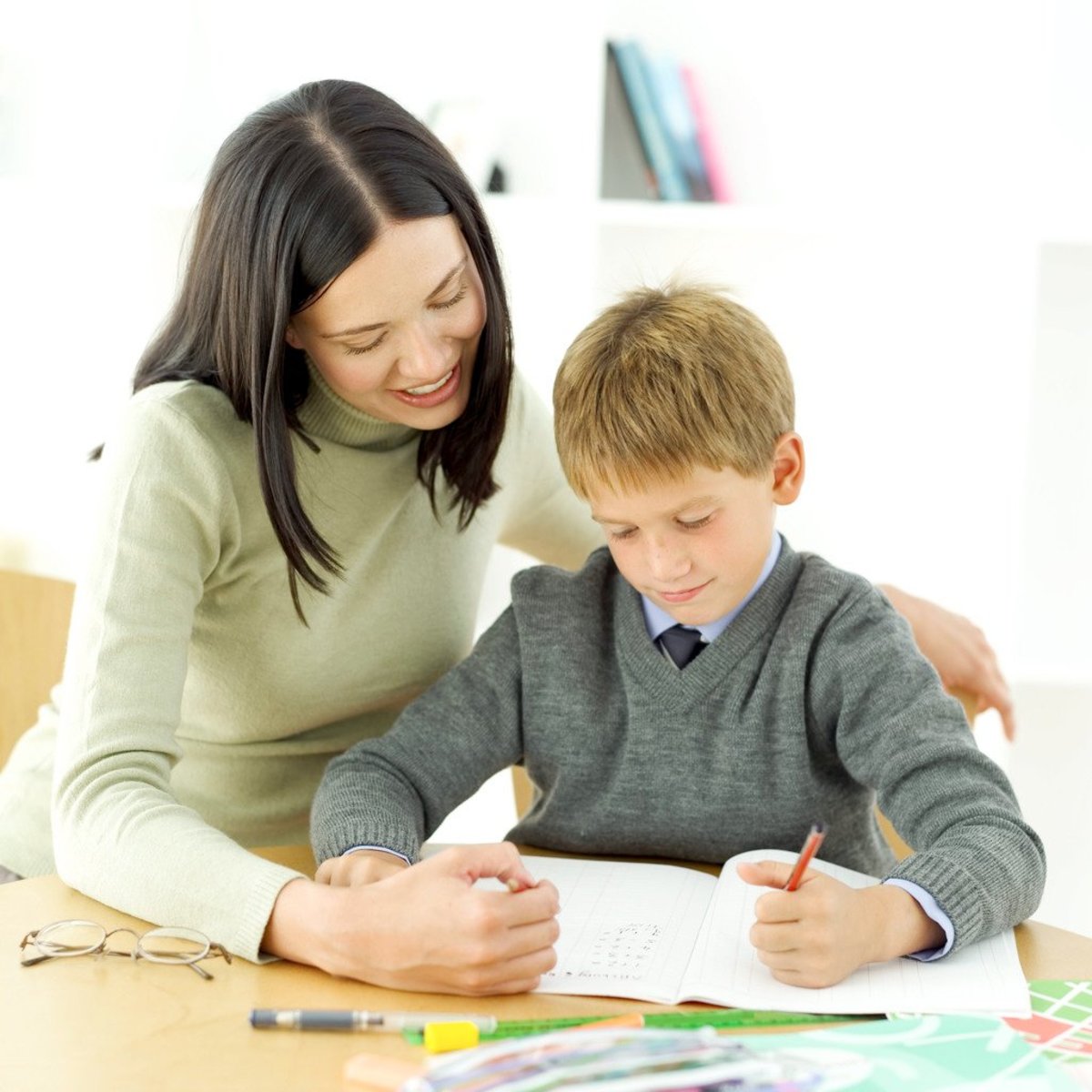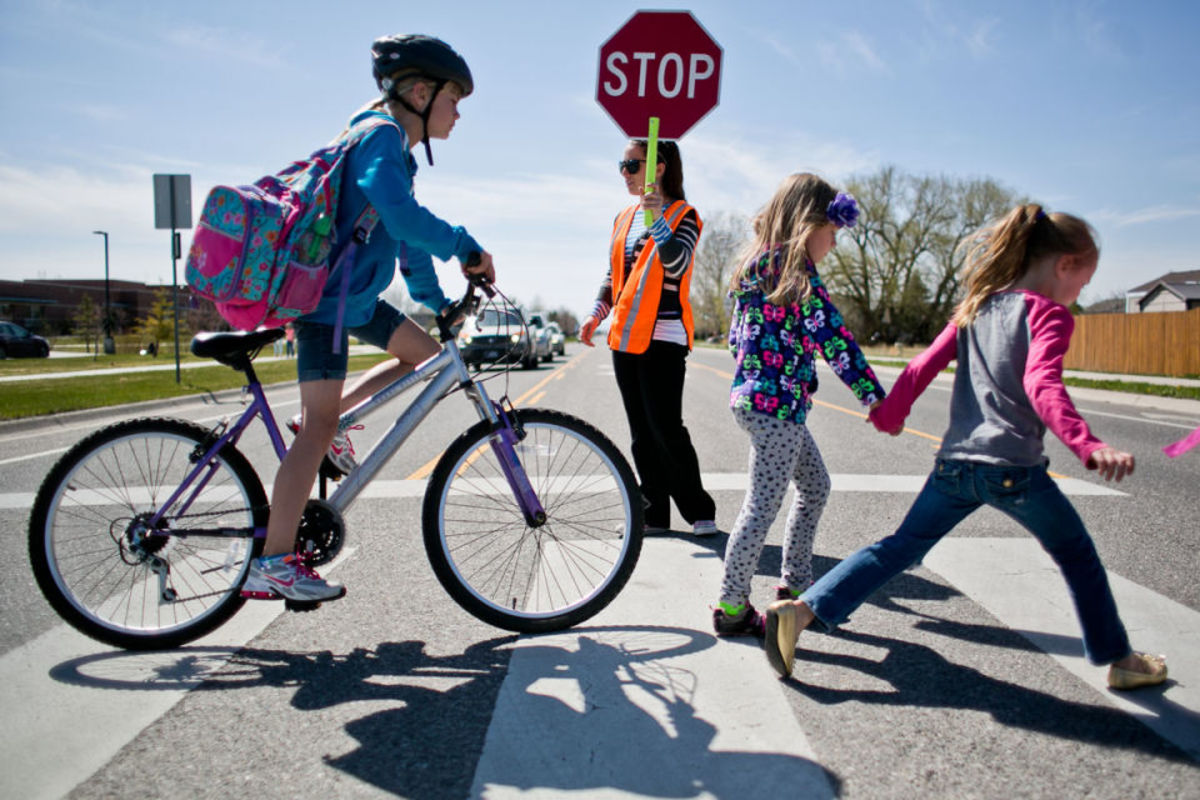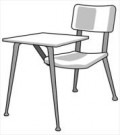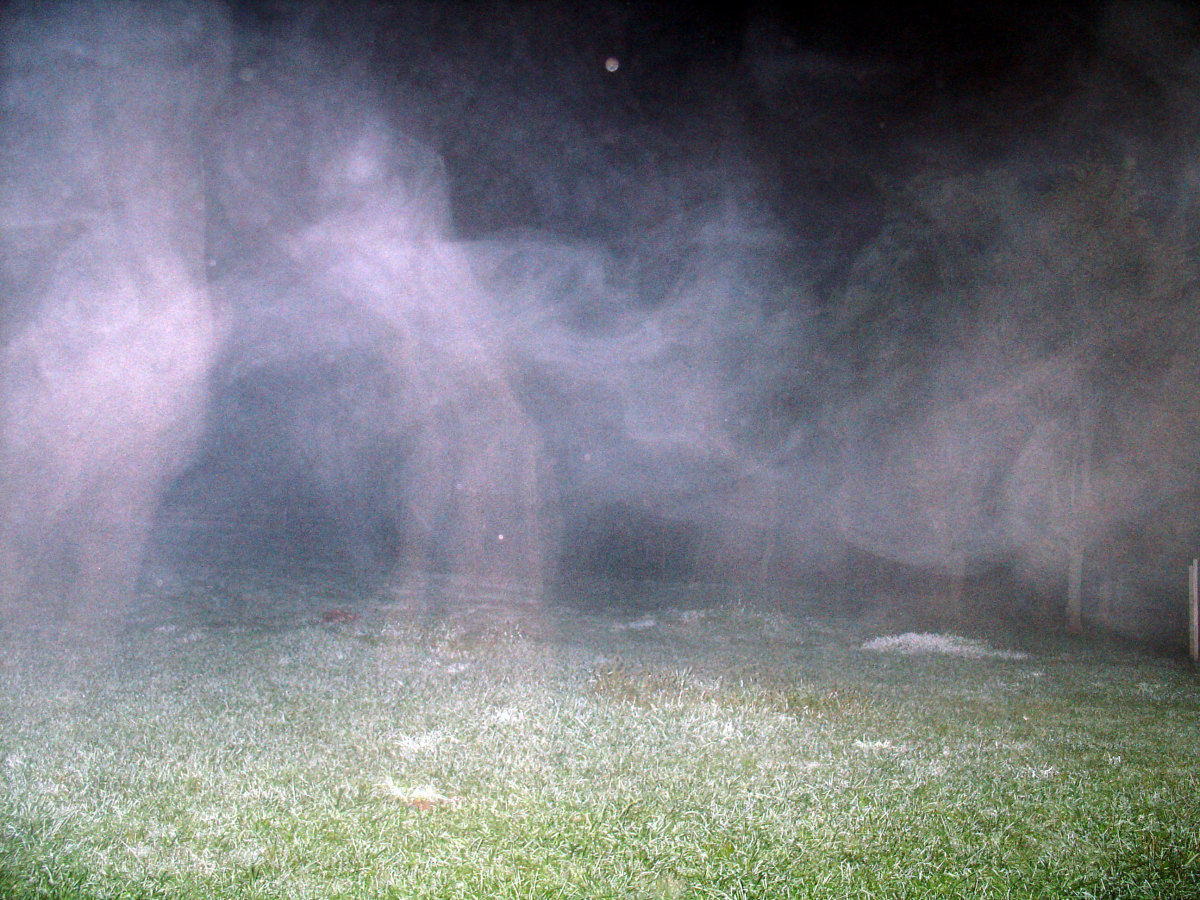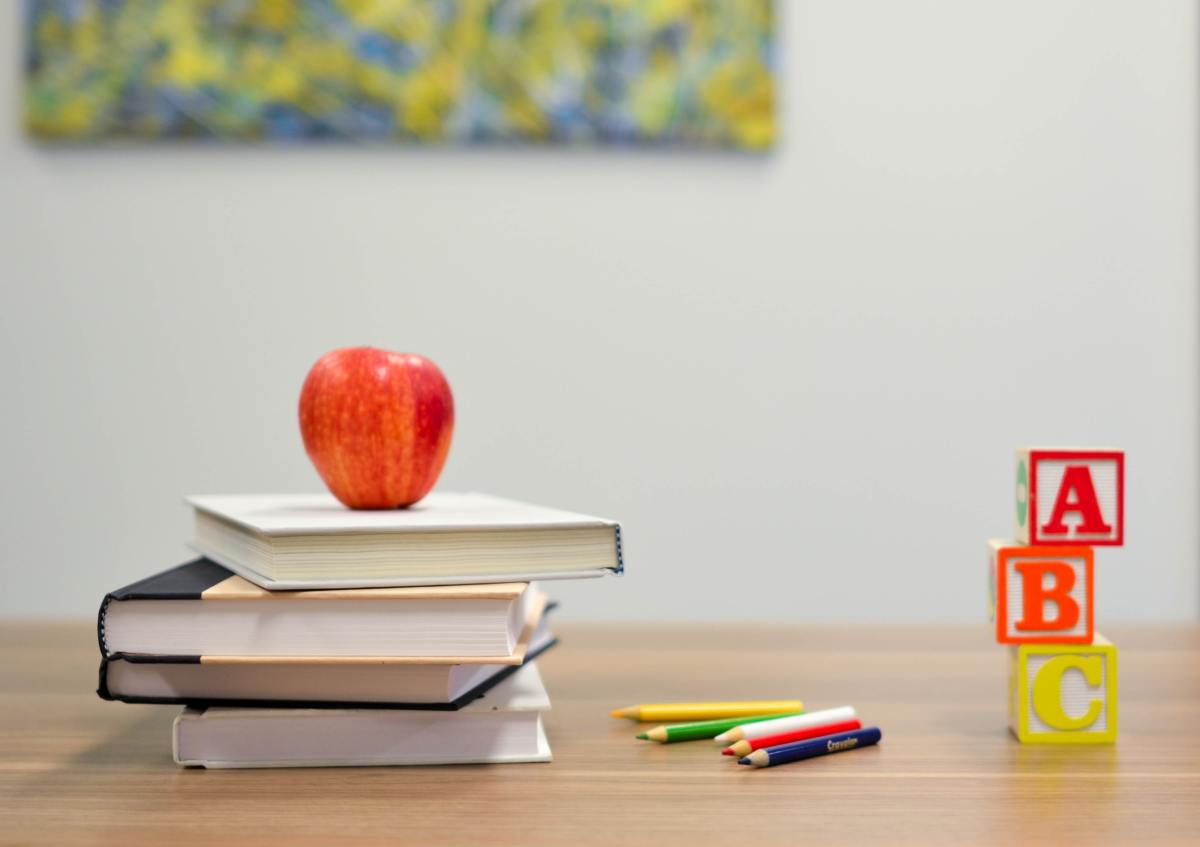Physical movement in the elementary school classroom boosts effective learning
An usual classroom scenario
In any school around the world, an average classroom scenario will be somewhat like this: Children are sitting at their neatly arranged desks, copying stuff from the blackboard/whiteboard or taking notes as the teacher is lecturing; raising hands to answer questions, answering questions or asking doubts; taking tests while being invigilated; working on assignments individually or in groups.
The above picture portrays a well-managed classroom, children at their best behaviour, following the instructions of the teacher and leaves the teacher satisfied about the learning taking place in her classroom as she could cover the topics as she had planned. But delve a little deeper and think for a while: Is the learning really effective? Are they reaching their potential? Will they be able to retain the content for long or connect the content taught with other areas of knowledge? Will they be able to apply the knowledge acquired in their real life situations?
Sitting in one place can be boring!

How much can you internalise in a sedentary classroom?
The children, especially elementary and middle school children have a lot of energy. In a sedentary classroom set-up, where the teacher takes charge and reads from a book or explains a scientific phenomenon or draws/writes on the board, the only physical exercise the children can have is using their hand muscles for writing in their notebooks. As adults, if we put ourselves in their shoes, how long can we keep our focus? We will either feel sleepy or restless or get disengaged unless the activities are extremely interesting and interactive.
For young children, keeping their focus on school work and being attentive, while being in the same seat for a long time is even more difficult as they cannot channelise their energies in an effective manner. Eventually they lose attention, discipline issues arise and learning curve begins to fall by the end of the day.
Research has proven that physical exercise is crucial to activate brain cells. Occasional bodily movements give breaks to the brain and brings back focus and in a given span of time, academically much more can be achieved.
Physical activity in the classroom boosts concentration!
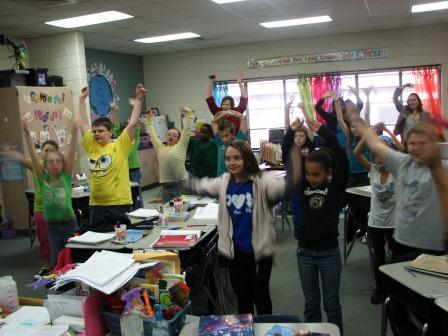
Some ideas of how to create opportunities for physical movements in the classroom
When I was reading this article, an action research report by a teacher in the elementary school [Source: Perceptions of an active classroom: Exploration of movement and collaboration with fourth grade students by Carrie Braniff, from Wayne State College], I came up with some ideas of how we can create opportunities so that children can have some essential physical exercise (energisers) and at the same time learn reading, science, math etc. These are active classrooms as opposed to the sedentary and inert ones.
1. Swapping places
You need few extra desks, a few more than the number of children in the classroom and enough space to move around in the classroom. After introducing the children to a topic, a small reinforcement assignment can be set by the teachers. Say five problems of math are to be done, you can give instructions like:
After correctly finishing problem number one, you will jump your way to another seat.
After finishing number two, you will skip your way to another seat.
Similarly after finishing numbers three, four and five you will dance, twist or stretch your hands etc. and change your places.
In this way you have motivated them to finish their classwork, at the same time you have given them chance to wriggle and giggle and have fun while swapping their places.
This activity will be effective and well-loved by the third, fourth and fifth graders. Moving their body parts will keep their brain active and alert, they would be able to think clearly and concentrate more while doing the math problems. These activities will need prior planning and since the class will tend to become noisy, a code word or gesture (lifting one hand etc.) should be used to let the children know that they need to lower their voices.
2. Vocabulary race (using flashcards)
In English as Second Language (ESL) classes or any other language classes we often use flashcards as an aide to learn and reinforce the newly learnt vocabulary. Large flashcards can be laminated and spread all over in the classroom. After the children have been introduced to the new vocabulary or the old ones need to be reviewed, they can be asked in turns to get the flashcards. The instructions can be like this:
@ Student X: Please bring the word 'bedroom'
@ Student Y: Please get the word 'computer' etc.
The children have to move out of their places and find the respective cards, the words are reinforced, they can be helped with clues if they have forgotten and at the same time a lot of movements happen, keeping them motivated and alert.
These activities can be modified according to the level of the learners, for advanced learners you could ask them to pick up a card and make a sentence with that word. If he can create a sentence correctly, he can hop and pick up another card and make another sentence. If he fails or makes mistakes, he will need to sit and wait for his turn again. In this way students can be energised while learning and some amount of physical exercise will be incorporated to break the monotony in the classroom.
3. Find your group members
This activity can have many variations and can be carried out during the lessons in any subject. For example I teach chemistry to the seventh and eighth graders. After I have taught them the concepts of acids and bases, I teach them how to identify acids, bases and salts. Then while we discuss chemical bonding, children learn to classify between covalent and electrovalent compounds, at some stage they also learn how to distinguish between elements, compounds and mixtures. Similarly in physics and biology, they must be learning classification of animal kingdom, plant kingdom or levers etc.
We do give reinforcement worksheets to recapitulate what they have learnt, but the best way for all kinds of learners to understand and retain the knowledge is through group games.
Make a list of different acids, bases and salts and write them on small pieces of papers, could be laminated for reusing every term. Then give the instructions like this:
Each one of you will be given a piece of paper, on which the name of a compound is written. The compound may be an acid, base or a salt. You have to move around the classroom and ask each other what compounds they have got and form a group of acids, bases and salts. The group which will be completed first will be the winner.
You stand back and see the exuberance of your classroom, students asking each other, moving around and seeking their group members with so much of enthusiasm. At the same time, when the groups are formed, you would realise that none of them went to a wrong group because while this exercise was happening children were interacting and learning from each other. You and your kids will both feel great about the activity, they will demand more of this.
4. Role plays/skits
In any history class or a literature class, after reading a story, arrange some time and space for the children to enact what they have learnt. You can create characters for them, or you may choose the scenes and they can select the characters themselves. Give them some planning time when they can sit in their groups in an informal way, and can flex themselves while thinking and brainstorming. Then each group has to present their role plays or skits in front of the rest of the class. This will enhance learning of the kinesthetic learners and also benefit all kinds of students by allowing them to come out of their confined seat and move their arms and feet while they perform their roles.
5. Magic paintbrush
When nothing is planned or the students had to take a heavy session by doing a difficult science concept or some challenging math problems, the teachers can make them do this activity. For all practical purposes, we know that every class cannot be turned into a fun class as curriculum requirements need to be met and some formal training for taking tests etc. is imperative for all grades. However, whenever you feel you need to wake your class up after a tiring day or a heavy subject, do 'Magic Paintbrush' activity.
The instructions go like this:
Stand up and have some space around yourself for movement. Use the index finger of your right hand as a paintbrush and draw something (anything you feel like) in the air. Keep drawing, after a few seconds, instruct them to change their paintbrush, use your left thumb to draw the same thing, after a few seconds .............. use your right elbow ................... nose, lips, right toe and keep changing the paintbrush but focus on drawing the same thing.
Let your children guess some body parts as well, they will choose the weird ones but have fun. Little movement between academics is essential for them to concentrate on school work.
Physical movements need not be confined to PE classes only!
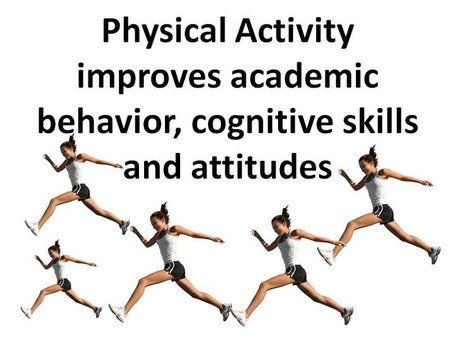
Thoughts and reflections
I know children diagnosed with ADHD benefit a lot from physical movements and being active in the classroom, also the children who have kinesthetic learning style do well. In conclusion allowing some movements and exercise in the classroom helps to engage kids's mind better and learning is far more effective. Children look forward to such action-packed classes and seldom feel bored and uninterested.
If you find this hub useful, teacher hubbers, please carry out these and similar activities in your classrooms. I would love to receive more ideas to use physical movements while learning in the classroom. Please let me know if your children love the activities and send your reflections, are these really impacting their grades or in developing personalities or correcting disciplinary issues? Please share your thoughts.



